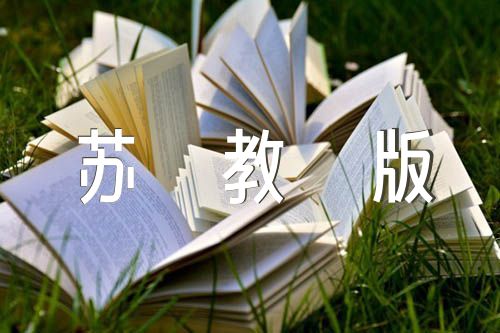高中英语教案范文(精选15篇)
让幼儿在活动中体验游戏的快乐,培养幼儿对缎炼的爱好及活泼爽朗的性格,培养团队精神。以下是小编整理的高中英语教案范文(精选15篇),仅供参考,大家一起来看看吧。

高中英语教案1
教学准备
教学目标
1、学生能通过寻找每段的主题句归纳文章结构。
2、学生能够通过在课文中寻找相关表述感知作者态度。
3、学生能够基于文本信息和话题相关语言,通过小组合作完成一封回信,表达个人感受。
教学重难点
1、学生能通过寻找每段的主题句归纳文章结构。
2、学生能够通过在课文中寻找相关表述感知作者态度。
3、学生能够基于文本信息和话题相关语言,通过小组合作完成一封回信,表达个人感受。
教学过程
Step1:Warm-up andlead-in (5 mins)
1、教师展示国外志愿者教师支教照片,引入本课主题:书信分享支教见闻和感受
2、教师介绍本课主人公——来自澳大利亚的Jo来到巴布亚新几内亚做志愿者教师。
3、指定一名学生课前准备,在课堂上结合PPT做3分钟口头报告,补充介绍巴布亚新几内亚的情况。
[教学目的]本环节的目的是激活话题词汇和背景知识图式。从单元主题到本课主题,让学生根据图片预测文章内容,激活相关词汇并;学生课堂口头报告锻炼口语表达能力,并展示相关词汇。
Step2:Reading forstructure
1、教师通过课文所配的10幅图片让学生预测课文内容。
1、教师要求学生快速通读全文完成段落大意的配对练习验证预测结果。
2、教师引导学生归纳出全文的整体结构。
[教学目的]本环节的目的是让学生了解文章的整体结构。不仅让学生学会寻找中心句,而且让学生从每个段落的中心句归纳出课文整体结构,让学生回顾信息交流类书信的写作结构。
Step3:Reading fordetails (10 minutes)
1、教师要求学生先同桌配对合作,然后按照学习小组分组合作,仔细阅读文章细节找出信息,完成下列表格(划线部分是学生需要填出的部分):
2、教师引导学生根据文章中的相关语言和信息体会作者的感情和态度。
[教学目的]本环节的目的是在把握文体的基础上,让学生深入了解文章细节,通过语言了解作者的观点态度,让学生对本课有进一步理解。课堂组织形式有个体独立完成和小组合作完成表格,小组合作的好处是可以通过讨论得到同伴支持,加快理解速度,加深理解程度,课堂气氛也比较热烈。
Step4:Language inuse
1、教师引导学生关注本文的语言特色——描写生动、细致。
2、教师要求学生模仿课文语言造句或者补全句子,谈谈自己的学校。
1)描写学校
a、Well, it’s a bushschool – the classrooms are made of bamboo and the roofs of grass、
b、Well, it’s a ____school – ____________________________、
2)描写教学
a、The other day I wasshowing the boys the weekly chemistry experiment when, before I knew it, themixture was bubbling over everywhere! The boys who had never come acrossanything like this before started jumping out of the windows、
b、The other day_________________________________________________ when, before I knew it,__________________________________! -__________________ __________________________、
3)描写家访
a、We walked for two anda half hours to get there- first up a mountain to a ridge from where we hadfantastic views and then down a steep path to the valley below、
b、We drove for 1 and ahalf hours to get to Shanchong village in Changtai county – first up a mountainto a ridge from where we had fantastic views and then down a steep path to thevalley below、
[教学目的]语言必须在运用中内化,本环节的目的是要提升学生正确运用新学到的语言结构表达的能力,让学生在语言操练当中对文章内容加深印象并能够运用到自己的表达当中。本环节的语言操练形式主要是看图给关键词造句,其他的训练形式还可以包括朗读重点段落、句型转换、句子翻译等等。
Step5:Writingactivity
1、教师提出写作任务:
2、四人小组合作完成写作任务。其中一人为记录员,其他三人各负责一个问题。
3、每个小组派一名代表到讲台上分享各小组的观点。
4、教师对学生的写作给与点评。
[教学目的]本环节的目的是提供学生展示运用本课所获取的信息和语言知识来表达自己的观点并进行阐述的机会,有利于提高学生的综合语言运用能力。
Step 6 Homework
1、小组课后修改课堂上完成的回信后上交。
2、课后上网查阅有关徐本禹的资料,下节课分享。
[教学目的]课堂上着重口头表达,课后着重学生落实在笔头上,二者结合,有利于学生巩固所学知识。
高中英语教案2
Good morning/afternoon, my dear judges. I"m number ___. It"s my great honor to have this opportunity to talk about my teaching ideas. My presentation consists of the following aspects.
Analysis of the teaching material
First of all, let’s come to the analysis of teaching material. This lesson is from New Senior English for China Book5 module 3, the reading part. The topic of this unit is about adventures. It is excerpted from Mark Twain’s work “ The Adventures of Huckleberry Finn”. The story is about two teenagers who find a steamboat and board on the steamboat.
Analysis of the students
Secondly, students are the subject of our class. After many years of English studying, they’ve known many words, sentences and some skills to solve English problems. They not only study the words and phrases, but also learn the meaning and the culture. So I would introduce them more knowledge above the passage to arouse their reading interest.
Analysis of the teaching aims
By the analysis of the New Curriculum Standard in English, teaching material and the students in my class, I set the following three teaching aims.
The first one is knowledge aims:
1)Students learn and grasp the following important useful new words and expressions: pour down; sail down; climb on to; panic; curious; tie up…
2) Learn the language and grasp the meaning in this passage.
The second one is ability aims:
Through reading, students reading ability and word-guessing ability will be improved.
The last one is Emotional aims:
Students will be more interested in the literature and cinema in English and enjoy the famous works.
Analysis of the key and difficult points
According to the analysis above, I set the key points and difficult points as follows.
Teaching key points:
Member and master new words and phrases and understand the passage.
Teaching difficult points:
Foster students’ interest of reading passage and improve their reading ability.
Analysis of teaching and study methods
Now, I would like to talk about the teaching methods and studying methods. As to the teaching methods, Communicative Approach and Task-based Teaching Method will be adopted in this lesson. I will lead them to study by themselves, and through answering my questions, they will have a good understanding of the passage.
Analysis of the teaching procedures
Now, let’s come to the most important part of this lesson: the analysis of the teaching procedures. This lesson is divided into 5 stages, that is, warming up, pre-reading, while-reading, post-reading and summary & homework.
Step 1 warming up
In my warming up stage, after greeting with the students I will Introduce Mark Twain and his works, such as The Adventures of Huckleberry Finn, Running for Governor,The Prince and the Pauper. Then tell students today we will learn adventure, a passage from The Adventures of Huckleberry Finn.
Mark twain is a famous American writer. Through the introduction, students will have more interest in reading famous works. And they will be curious about the passage and I can move to the next step smoothly.
Step 2 Pre-reading
In pre-reading, I will ask them to have a free talk about adventure.
Ask them talk about adventure. For example: What is adventure? Would you like to go? Adventure is an exciting trip. Perhaps sometimes you feel bored, you could imagine going on a great adventure, such as caving, climbing, sailing and canoeing.
Then lead students to predict the passage, ask them to Look at the picture in the book and discuss the following questions:
1. Who are they? 2. Where are they? 3. What are they doing? 4. What is the boy pointing at?
In this way, students will be familiar with adventure and lay a foundation for reading the passage.
Step 3 While-reading
In this period, there are two activities: global reading and detailed reading. Firstly, global reading, I would like to give students 5minutes to have a global reading to check their ideas what they predict during the pre-reading. At the same time, they find out and circle the difficult words.
Fast reading can help students understand the whole passage quickly and practice their logic thinking. Then I will explain the difficult words, such as fantasy, identify, and account. For example
Fantasy n. the activity of imaging things
phrase: live in a fantasy world fantastic adj.
identify v recognize sb or sth
identify the criminal
identity n. ID identity card
Next, it should be detailed reading. I will ask them to read the passage again and do the exercise2 on the book. Number the events in the order they happen. Then I check the answer.
After this reading, students will grasp the whole passage. In order to create more chance for students to read, I will ask students read the passage paragraph by paragraph. Answer the following questions showed on the PPT.
Paragraph1. Discover a steamboat
What was the weather like that night?
What did they see and what were they doing then?
Paragraph2-5 board the steamboat
How did Huck and Jim get to the sinking steamboat?
How did they get on it?
Paragraph6-8 in the steamboat
What did Jim do when they heard someone was going to kill another?
Paragraph9-11 leave the steamboat
What did Huck decide to do after he heard they would leave the man on the steamboat?
Students will get more detailed information, and more interested in this story. Furthermore, they would like to read more works of Mark Twain.
Step4 Post-reading
Now it should be post-reading. In order to make sure that students will master the new words, I will ask them to do the exercise 4 and 5. Encourage them to member the verb words and phrases during the exercises.
After the exercise, I will give them 5 minutes to prepare, then to retell the passage according to the event orders. During the oral English time, I will encourage them to open their mouth and give them more positive evaluation. It benefits students for practicing their speaking and having more confidence in learning English.
Step 5 Summary and homework
At the end of the class, I’d like to make a summary about this lesson and present my homework to consolidate what the students have learnt in this period. I will conclude with my students together what we’ve learnt. The home work is to remember the key words and phrase and write a short passage about what will happen next.
高中英语教案3
Fast reading
Read the passage as quickly as they can. I show the questions on the screen and let them get the
main idea of each paragraph:
1. Why can living things live in such oceans around the Antarctica?
2. What does the whale feed on?
3. What is the difference between the sperm whale and other whales?
Method: Read the text individually, use question—and—answer activity.
Purpose: Improve the students’ reading ability.
Understand the general idea of each paragraph.
高中英语教案范文Step 5
Listening(book closed)
1. Listen to the tape then do an exercise(wb page 90, part 1)
2. True or false exercise.(on the screen)
Train the Ss’ listening ability and prepare for later exercises.
高中英语教案4
UNIT4 ENGLISH POETRY
县三中 覃巧
Time: October 21 ,
Class: Class 1,Grade 2
Teaching Aims:
1. Train the students’ reading ability
2. Learn more about English poetry through the passage
Teaching important and difficult point:
How to help the students improve their reading ability and understand the text better.
Teaching methods:
1. Discussion 2.Fast reading 3. Careful reading
Teaching aid: Computer
Teaching Procedures:
StepI Greetings and Duty report
StepII Lead—in
1. Play a Chinese poem for students and then ask students to think about
the Chinese poets who the students have known.
2. Use five minutes to discuss them with students together.
StepIII Read the new words of this unit
Step IV Reading1. Play the Mp3 of the text and ask students to read the text
quickly .Then find out how many English poets are mentioned in the passage? Who are they ?
2. Read the passage again carefully and then do the exercises on the
screen.
3. Ask some students to give their answers.
Step V Summery
Step VI Homework
1. Ask the students to the text as much as possible and then pay
attention to the new words in the text.
2. Find out the answers what do the words in bold refer to in the
passage.
高中英语教案5
《Chinese seasonal festival》
一、教材分析
1.单元内容所体现的意义:本单元的主题为Celebration,主要是介绍了中外国家的一些主要节日,以及人们在一些重要节日的庆祝活动。通过本单元的学习,可以帮助学生理解交际中的文化差异,初步形成跨文化交际意识。
2.课前的内容与本节内容的内在联系:在Warm-up 环节部分,学生已了解一些关于“庆祝”的内容及相关词汇,为本课的话题作了一些词汇和内容的铺垫。
二、学生分析
1.学生年龄特点,和对学科学习的情感表现:学生对学习的内容有着强烈的好奇心,表现出多样的学习技能和策略,喜欢把语言学习与自己的现实生活和兴趣联系起来。
2.学生语言知识和技能:学生对本课话题Chinese Seasonal Festivals 已具备一定的背景知识、经历和经验;况且在Warm-up 环节,学生已了解了一些相关的内容及词汇,这些都有助于语言活动的开展 。但是要用英语进行思维和表达,还是有一定的难度。
3.学生的学习策略和其他技能:高一的学生已初步具备用英语获取信息、处理信息、分析问题和解决问题的综合能力,但需进一步的提高。
三、教学目标
1.语言知识目标:
A.词汇和短语
seasonal, journey, celebrate, traditional, including, Lantern Festival, origin, decorate, take part in, burn down, sweet dumpling, culture, Zongzi
B.重点句子
1)The Mid-Autumn Festival is celebrated by Chinese people.
2)In the old days, dragon boat races were held in Chinese communities.
3)Lanterns were usually lit by candles and decorated with pictures of birds…
2.语言技能目标:
1)提高从文章中获取主要信息,并进行分析、推理和判断的能力。
2)积极参与语言实践活动,提高用英语进行思维和表达的能力。
3.知识能力目标:
1)学会用英语简单介绍中国的节假日。
2)进一步了解我国的一些主要的节日及其相关的历史源源,从而尊重传统文化,增强爱国主义精神。
4.情感与人文素养目标:
1)关注学生在学习中的情感态度变化,引导学生形成乐于与他人合作,具有和谐与健康向上的品格。
2)掌握有效的学习策略,学会独立获取信息和资源,并能整理、分析和总结,从而充实生活。
3)通过文化的了解,增强爱国主义精神和民族自豪感,提高对中外文化异同的敏感性和鉴别能力,为跨文化交际能力打下基础。
5.重点与难点:
1)如何让学生在阅读活动中获取信息,理解全文。
2)在语言实践活动中,要求学生用英语进行思维和表达,有一定的难度。
四、教学设计理念与策略
1.教学设计理念:1)采用任务型语言教学。
2)采用激发主体兴趣的教学模式。
3)运用合作学习的方法。
2.教学策略: 1)Fast reading to get general idea.
2) Careful reading to get detailed information.
3) Free-talk before reading to make students interested in what they will learn.
4) Group work after reading to make students understand what they have learned better.
五、教学用具
a recorder, a computer, and a projector
六、教学过程
Step1 Lead-in
T: What is your favorite season? What festivals happen during your favorite season?
( 以问题的形式引入本课的主题:Chinese seasonal festival. 由此引起学生的学习兴趣,自然导入课题)
S1: I liker summer. There are Children’s Day, Dragon-boat Festival and Mother’s Day.
S2: My favorite season is winter. They are Spring Festival and Lantern Festival and Christmas Day.
S3: ……
T:Well done. Thank you. Now, let’s enjoy some interesting pictures and guess what is happening and what is being celebrated.
(欣赏图片和讨论的同时,让学生把注意力集中到与本课有关的三个节日上:
端午节、元宵节和中秋节。并且通过图片可以让学生掌握更多的节日和如何表达,如清明节,母亲节等)
Step2 While-reading
1.Fast-reading
Read the texts quickly. Match the pictures with the festivals.
Picture A Mid-Autumn Festival
Picture B Dragon Boat Festival
Picture C Lantern Festival
(快速阅读环节中的问题可以培养学生的快速阅读技巧和获取文章整体信息的能力,达到理解课文表层意思的目的。此类问题可提问一般的学生,增加他们学习英语的信心。)
1.Careful-reading
1)Ask the students to read the first passage carefully and answer 3 questions below.
(1)When is the Mid-Autumn Festival celebrated?
(2)What do people eat on this day?
(3)Why is this festival important?
(细读环节则是对重要的段落进行细读,加大信息量,帮助学生加深对课文的理解。教师选取了文章的第一段,引导学生观察和提取与中秋密切相关的具体事实和信息。)
2)在老师示范完第一段提问后,把学生分成两大组,然后两组间针对此段文章内容互相提问(以小组竞赛形式进行,既活跃课堂气氛,也可以拓展学生思维能力,提高他们的发问和回答的能力,也从而加深他们对课文内容的了解。)
3)Read the texts again and fill in the table.
高中英语教案6
教学准备
教学目标
1). To learn the knowledge of the cultural relics.
2). Discuss how to protect our cultural relics.
3).Reading and understanding, catching the history and information of the Amber Room.
4). Functional item, how to tell the story about the Amber Room
5). Finish the comprehending exercises after the reading passage.
6). Use scanning; skimming and careful reading to learn the story of the Amber Room.
教学重难点
Key points
To understand cultural relics.
How to tell the story about the Amber Room
Difficulties
Talk about cultural relics at home and abroad in English freely.
To learn the story of the amber room.
教学工具
课件
教学过程
导入
1). Guessing:
Teacher present some pictures and statements ,let the students guess whtat or where it is.
The Great Wall; The Pyramid ; Taj Mahal
2)Teacher show some pictures. They are all very famous places in China or in the world. Ask the students to think these over:
A. Can you name them out?
Who have the right to own and confirm them?
(The shown pictures: Group 1;①Yuanmingyuan; ②Forbidden City
Group 2: ③Ming Dynasty vase ;④Taj Mahal; ⑤ivory dragon boat
and Mogao Caves)
Step I: Pre-reading
1).Ok, you have know something about cultural relics, have you ever seen a piece of amber?And what do you know about it?
Show some pictures of amber. Let students know what the amber is and its value.
color yellow- brown
feel like feel as hard as stone
Amber is the fossil(化石) form of resin(树脂) from trees.
It takes millions of years to form.
2). Can you imagine a house made of amber?Please preview “In search of the amber room.”
Step II: Fsat reading and thinking about the title:
1). Teacher give students the following questions to think:
When you see this title, what do you want to know?
What is the Amber Room?
Why was it called the Amber Room?
What was it made for?
What happened to it?
Why to search for it?
(Ask the students just remember these questions in their mind not find the answers.)
2). Fast reading to get the main idea:
The Amber Room , which xxxxxxxsent to the Russian people as a xxx, was xxby the xxxxx soldiers .
(Students read the passage quickly and fill in the blans)
3). Now, let the students try to answer the questions in part 1). (PPT 7)
(Teacher may give some necessary help)
Step III: Scanning
Ask the students to scan all the names of the person appeared in the text and find out what did they do to the amber room. Join the correct parts of the sentences together. (exercise 1 on page 2)
After do the above exercise ,teacher give students a picture of the people in the text and let the students try to tell theclue of the story according to the persons. (PPT 9)
Step IV: Skimming
Ask students to skim the passage and complete exercise 2 on page2.
( 3 ) How did the Amber Room become one of the wonders of the world?
( 5 ) How was a new Amber Room built?
( 4 ) How did the Amber Room get lost?
( 1 ) How was the Amber Room made?
( 2 ) Why did the King of Prussia give the Amber Room to the Czar of Russia as a gift?
Step V: Careful reading
Let the students read the text carefully and try to find some details to complete the form on PPT 11.
Step VI: Role play
Just now you have learnt the story of The Amber Room, now suppose you are a guide of The Amber Room, how will you intrduce the amber room to the visitors?
( Give students about 3 minutes to have a discussion in group of four ,then ask some of groups to make a role play before all the class.)
Homework
1. Read the story of The Amber Room again after class.
2. Write the introduction of the Amber Room you have discussed in class.
3. Prepare for next period by underline the difficult points in the text.
高中英语教案7
二十一世纪,中国将全面推进素质教育。中国共产党中央、国务院《关于深化教育改革,全面推进素质教育的决定》指出:“实施素质教育,就是全面贯彻党的教育方针,以提高国民素质为根本宗旨,以培养学生的创新精神和实践能力为重点,造就有理想、有道德、有文化、有纪律的德、智、体、美等全面发展的社会主义事业的建设者和接班人。进一步改革德育工作的方法,寓德育于各学科教学之中,智育工作要转变教育观念,改革人才培养模式,积极实行启发式和讨论式教学,激发学生独立思考和创新的意识,切实提高教学质量。要让学生感受、理解知识产生和发展的过程,培养学生的科学精神和创新思维习惯,重视培养学生收集处理信息的能力,获取新知识的能力,分析和解决问题的能力,语言文字表达能力以及团结协作和社会活动的能力。“根据素质教育的要求,英语教学必须进行改革。
高中英语课程改革的主要目的是:建立新的外语教育教学理念,使课程设计课程内容具有时代性,基础性与选择性;建立灵活的课程目标体系,使之对不同阶段与不同地区的英语教学更具指导意义;建立多元,开放的英语课程评价体系,使评价真正成为教学的有机组成部分;建立规范的英语教材体系以及丰富的课程资源体系,以保障英语课程的顺利实施。
因此,根据高中生认知能力发展的特点与学业发展的需求,高中英语课程应该强调在进一步发展学生综合语言能力运用的基础上,着重提高学生用英语获取信息,处理信息,分析问题与解决问题的能力,特别注重提高学生用英语进行思维与表达的能力;形成跨文化交际的意识与基本的跨文化交际能力;进一步拓宽国际视野,增强爱国主义精神与民族使命感,形成健全的情感,态度,价值观,为未来发展与终身学习奠定良好的基础。
在新一轮基础教育改革的今天,教师正面对着一个新的课程环境,新的课程研究模式,一个要求教师角色向广度延伸,向深度扩展的时代背景。在这个传统教育方式与现代教育方式激烈对峙的转型时期,交织着教师的退缩,彷徨,奋进的各种心态。课程改革的基础是教师,没有高素质的教师队伍,改革就难以成功。但像高素质的人才只能在改革之中而不能在改革之前产生一样,课程改革所需要的高素质的教师只能在改革中造就。所以,在高中英语新课标实施的过程中,我们英语老师究竟如何去应对这种改革背景,全面提高自身素质就成为新课程实施成功与否的关键所在。
要迎接好新课程的挑战,我们就要建立终身学习的理念,不断更新知识结构,发展专业能力与知识能力,以适应现代社会发展对英语课程的要求。树立终身学习的理念实际上就是强化教师自我发展的终身化意识,主要表现在:
首先,教师要不断进行教学反思。广泛的反思性教学实际上就是要求英语教师对教学不断反思、对业务不断提高、对自我不断发展,以促进教师发展朝终身化方向发展。反思将强化教师的创造性、激励个人成长愿望、有益于传授主要知识和培养课堂技能,养成教师的专业气质。以高标准进行反思性教学的教师将逐渐形成敏锐的专业判断力,使英语教师更加专业化。这就要求教师要克服一次性学习的观念,树立终身学习的精神,使每一堂课的教学都成为教师反思和提高的机会。那么受益的学生就远不只一堂课、一个班级。
自我发展的终身化就要求知识必须不断更新,那么英语教师的备课就要随时间的变化而变化,随班级、学生的不同而变化。这就意味着要求教师的每一堂课都要上出新意,都要推陈出新,无形中培养了教师终身学习、终身发展的意识。英语教师要力图把每一堂课都当作提高自己教学质量、指导课堂教学、拓宽自己专业眼界的机会。因为无论一个教学过程多么好,都可以改进或改革以更好地满足学生的需要。
其次,分析自己的教学经验,写教后感,有规律地反思成功或失败的经验。还要经常分析教学实践与学生学习之间的关系,以开放的心态对待创新,把学生的需要与长期的教学目标结合起来。一旦养成终身的自我评估习惯,教师将不断地挑战自己,发展自己,从而把专业的成长与发展和赋予课堂教学以活力当作自己的责任。
挖掘学生和当前语言教学的知识深度、开拓他们知识的内容广度、促进学生和教师的认知发展。要明确地认识到英语教学是一个发展的领域,所以英语教师要经常研究教学实践,精通专业人文知识,同时还要了解英语教学的前沿问题,跟上学科的发展。通过创新,通过各种方式主动研究自己的教学,追求、探索自己不熟知的领域,自觉养成终身研究的习惯。
再次,英语教师要不断分析、评价自己的教学质量,强化教学效果、促进学生学习,形成自己教学行为原理,促进终身自我发展。还要经常与同事交流、参加集体备课和研讨课,以类似的研究强化终身型的学者气质。另外,为更新自我知识,还要积极地与其它学科教师进行有效的互相交流和学习,积极寻求同事的帮助,以教师和学习者的身份继续发展自己。同时,参与同行教师的教学、欢迎同事以他们的观察帮助自己做自我评价,或学习其他在教学上富有经验的教师。从而提倡内部合作与团队精神,实现跨学科、跨层次教学。
新课程要求我们从以知识为本的教育理念转变为以学生发展为本的教育理念,重新认识高中英语课程的目标与定位。长期以来,我们高中英语教学的都是围绕着高考这根指挥棒,目的是为了高考能够出好成绩。因此,我们的英语教学工作带有明显的功利主义色彩,而忽略了它的人文性目的,忽略了语言对青少年进行素质教育方面的重要作用。《高中英语课程标准》明确指出:“高中阶段的外语教育是培养公民素质的重要过程,它既要满足学生心智与情感态度的发展需求以及高中毕业生就业,升学与未来生存发展的需要,同时还要满足国家的经济建设与科技发展对人才培养的要求。因此,高中阶段的外语教育有多重的人文与社会意义”。从这里可以看出,新课程要以培养学生的实践精神与创新精神为目标,共同为学生的终身发展打下良好的基础。
高中英语教案8
学习目标
Students are to be able to
predict what to hear.
use the group of words related to stress.
tell the ways to deal with the stress.
教学流程
学生背景
升入高中后的"第二节英语课。
教学内容
1) Listen to an interview concerning stressful situations
2) Predict before listening
教学目的
1) To identify stressful situations.
2) To use stress related words and expressions.
3) To learn about ways of dealing with stress.
4) To predict before listening.
教学过程
步骤
教师活动
学生活动
时间 教具
板书
可能遇到的问题
Lead in
Ask questions
Write down key words on the Bb Answer the questions
Get familiar with the topic 2’ Pictures
Computer Title
New words and key sentences Ss might not use the target words
Introduce
Lexical
Items in
Context
Write down model sentences on the Bb Brainstorm and talk about stressful situations 3’
Textbook Model sentences Differences between
very, quite vs.
a little
Check point Ex. 2 Page 10 Focus on the form, meaning and use of the lexical items 3’
Textbook Key words Ss might have difficulty producing the answer:
stress pressure
Prediction Introduce the technique of prediction Ss use the technique to predict answers individually
Justify their opinions in pairs 5’ Textbook
computer No Ss’ individual differences
Listening
Play the cassette
Highlight the strategies
Play the cassette
twice Listen for general information to check the answers 10’ Computer
Textbook No Some Ss might feel depressed after checking, then they need encouragement
Listening Play the cassette for the third time
Encourage Ss to choose suitable ways to answer the 3 questions based on their ability
Help Ss to find the right answers Listen for specific information to answer the question
Get enough information on stress and learn the ways to deal with stress 12’
Textbook
Answer sheet
Computer No
Ss might over or under- estimate their own ability to answer the questions
Ss might not be able to collect enough specific information to finish the task
Give Suggestions Offer a chance for Ss to evaluate their study Solve practical problems in their life in groups
Presentation
Evaluation 10’ Answer sheets Evaluation form
The suggestions might be quite different based on individual differences, whatever the results everyone should be awarded
Homework Read Supplementary Reading on P7 & P9
高中英语教案9
1.occasionn.时刻,时节;大事;节日
[应试指导] (1)on no occasion位于句首时倒装的考查 (2)作先行词时定语从句引导词的考查
on occasion(s)偶尔,有时
on one occasion曾经,有一次
on this/that occasion在这个/那个时候
on no occasion绝不,不会
occasional adj.偶尔的,间或发生的
occasionally adv.有时,偶尔
It is an occasion for all the family to celebrate.
这是个值得举家庆祝的时刻。
What do they say when they meet on a formal occasion?
在正式场合见面的时候,他们要说什么?
[夯实基础]
语法填空
(1)I call on my parents on occasion.
(2)On no occasion should you do such a thing like that.
(3)I can remember very few occasions when he had to ask for leave because of ill health.
2.celebrationn.庆祝;庆典(aspeciallyorganizedeventtocelebrate..
[应试指导] 祝贺类写作高频词汇
in celebration of为庆贺……
celebrate sth.庆祝……
congratulate sb./oneself on sth.因……向某人/自己庆贺
Congratulations!祝贺!恭喜!
Usually,no matter how far away or how busy we are,we will try to return home for the celebration.
通常不管我们多么远,多么忙,我们都努力回家来庆祝这一节日。(辽宁·书面表达)
[夯实基础]
语法填空
(1)The old couple held a party to celebrate(celebrate) their fiftieth wedding anniversary last week.
(2)I want to congratulate you on your success with all my heart.
(3)Celebrating/To celebrate(celebrate) Christmas is their custom.
(4)I congratulated myself on having chosen a good woman to be my wife.
3.powern.能力;力量;权力;动力
[应试指导] 在谚语中的应用
come to/into power掌权;上台
in one’s power在某人的掌控中
beyond/out of one’s power某人不能胜任的,超出某人能力的
do all in one’s power尽力而为
As the saying goes,knowledge is power.
俗话说,知识就是力量。
She is said to have the power to foresee the future.
据说她有预测未来的能力。
She interviewed six women who have reached positions of great power and influence.
她采访了6名身居高位,并且颇具影响力的女士。
[夯实基础]
(1)语法填空
①The president is the most powerful(power) man in America.
②They have invented a new car,which is powered(power) by solar batteries.
(2)He told her that he would do everything in his power to prove that he was the man for her.
①He told her that he would do what he could to prove that he was the man for her.(改为含有what从句的复合句)
②He told her that he would do his best to prove that he was the man for her.(用do one’s best改写句子)
4.destroyv.摧毁,毁灭;破坏(damage...badly
destroy one’s health有害健康
destroy one’s career/hopes毁灭某人的`事业/毁掉希望
cause/do damage to对……造成破坏
The fire destroyed most of the building.
大火把这座建筑物几乎烧毁了。
All hopes of a peaceful settlement were destroyed by his speech.
和平解决的希望都被他的讲话给毁了。
Failure was slowly destroying him.
失败渐渐地把他毁了。
[词义辨析] destroy,damage
(1)destroy表示毁灭性的破坏,多指无法修复。
(2)damage指不同程度的损害、毁坏;作名词时,表示“损害”。
[夯实基础]
(1)用destroy,damage的适当形式填空
①The bridge was destroyed by the flood.
②The strong sandstorm damaged most of the young trees.
(2)语法填空
①Smoking destroying(destroy) his health,he is quite weak now.
②His hope destroyed(destroy),he felt helpless.
5.decoratev.装饰;装修
[应试指导] 场所介绍类写作高频词汇
decorate...with...用……装饰……
decoration n.装饰;装修;装饰品
The hall is decorated with flowers.
大厅里摆放着鲜花。
[夯实基础]
语法填空
(1)With its simple decoration(decorate),the main bedroom is a peaceful heaven.
(2)He decorated his room with pictures of all his favorite sports figures.
6.servev.服侍……进餐;服役;供职于;服务;用作
serve sth.to sb.=serve sb.sth.给某人端上……
serve the people为人民服务
serve as当作;作为
at the service of sb.=at one’s service听……差遣;随时准备为……做事
server n.服务器;侍者
Who will serve lunch to us/serve us lunch?
谁招待我们吃午饭?
The company said it would focus on making more competitive servers,storage and networking gear,as well as analytic software.
该公司说,它将专注于生产更有竞争力的服务器、存储设备和联网设备,以及分析软件。
[夯实基础]
(1)When the news came that the war broke out,he decided to serve in the army(去部队服役).
(2)She ushered(引导) me into the front room,which served as(用作) her office.
(3)We are at your service(随时为你服务).Don’t hesitate to turn to us if you have any further problems.
7.applyvt.&vi.涂(putorspreadsth.ontoasurface);应用(use);使用;申请(makearequest);涉及(concern,relate)
apply vt.&vi.涂(put or spread sth.onto a surface);应用(use);使用;申请(make a request);涉及(concern,relate)
[应试指导] 申请类写作高频词汇
apply (to sb.) for sth.(向某人)申请某物
apply to适合
apply sth.to sth.把某物应用(涂抹)于……
apply oneself to (=be applied to)(doing)sth.致力于/集中精力于……
application n.申请;报名;适用
applicant n.申请者;应征者;报名者
Apply some medicine to his wound.
给他的伤口上点药吧。
What you said doesn’t apply to me.
你所说的并不适合我。
[夯实基础]
(1)用apply的适当形式填空
①The new technology,if applied to rice growing,will help increase the grain output.
②His application for membership of the organization was rejected.
③If the applicant is not a true candidate for the job,do not interview him.
(2)If you apply yourself to the job in hand,you’ll soon finish it.
①Applying yourself to the job in hand,you’ll soon finish it.(用现在分词短语作状语改写句子)
②Applied to the job in hand,you’ll soon finish it.(用过去分词短语作状语改写句子)
8.attendv.出席,参加(bepresent);照料,护理(takecareof);处理,对付(dealwith)
[应试指导] 其高级词汇是be present at
attend school/class/church上学/上课/做礼拜
attend on/upon sb.伺候某人;照顾某人
attend to sb./sth.处理;倾听;照料;专心;注意
Thousands of people attended the ceremony.
数千人参加了庆典。
They will not attend the Olympic Winter Games.
他们不会出席本届冬奥会。
The main thing is to attend to the injured.
首要任务是照顾伤者。
[夯实基础]
用attend短语的适当形式填空
(1)—Would you like to join us in the game?
—I’m afraid not,for I have something important to attend to.
(2)I’m staying at home tonight to attend on/to my father.
9.contributev.捐献;捐助(givemoneyorgoodsto...);是……的原因之一(beoneofthecausesofsth.);贡献;投稿(write...for...)
contribute v.捐献;捐助(give money or goods to...);是……的原因之一(be one of the causes of sth.);贡献;投稿(write...for...)
[多词一义] contribute to,result in,be responsible for,bring about,lead to,cause
contribute...to...把……贡献给……
contribute to(=result in/lead to)有助于;导致
make a contribution/contributions to对……作出贡献
He contributed a lot of good ideas to the discussion.
他在这次讨论中提出很多好的想法。
Would you like to make a contribution to the hospital building fund?
你愿意为医院建设基金捐款吗?
[夯实基础]
(1)同义句改写
Various factors contributed to his downfall.
Various factors resulted in/led to/were responsible for/caused his downfall.
(2)In a discussion group,it’s very important that everyone contributes(每个人都贡献) whatever’s in their minds.
10.linkv.&n.关联;联系;关系
link...to/with把……连接起来
be linked to/with和……有联系
link up连接起来
Researchers have detected a link between smoking and heart disease.
研究人员发现了吸烟和心脏病之间的关系。
Television stations around the world are linked by satellites.
全世界的电视台通过卫星联系在一起。
[夯实基础]
语法填空
(1)Police suspect there may be a link between the two murders.
(2)The newspapers have linked his name with hers.
(3)The two spacecraft will link up with each other in orbit.
11.seriouslyadv.认真地;真诚地
take...seriously认真对待
be serious about对……严肃
I want people who take responsibility seriously.
我想招的是那些严肃对待责任的人。
I’m afraid I’m not a very serious person.
恐怕我不是一个非常严肃的人。
[夯实基础]
(1)It was a question which deserved serious consideration(认真考虑).
(2)He was serious about(认真对待) the matter.
12.messn.脏或乱的状态;弄乱,弄脏
in a mess一片混乱
make a mess of把……弄乱
mess up把……弄糟
messy adj.杂乱的
When he returned home,he found everything in a terrible mess.
他回到家以后,发现一切都乱糟糟的。
Don’t mess up the house while I am gone.
我不在的时候别把房子里弄得乱糟糟的。
高中英语教案10
一、学情分析
当前在中学生中吸烟现象比较常见,课本内容接近学生生活,对学生有教育意义,容易激发学生的学习热情,易于展开讨论。
二、教材分析
本课是高一必修2第二模块里的一篇阅读课(Reading),出自外语教学与研究出版社出版的高中英语学生用书。在第一课Introduction里面初步接触和学习了描写抽烟、吸毒及其危害性的词语, 这一课Reading是上文的延续。本课Reading实际上分为两篇文章,第一篇主要讲述了一个吸毒者和他的故事;第二篇主要讲述了使用可卡因的危害。
三、设计思路
本堂课采用任务型教学途径,这种途径是以应用为动力,以应用为目的,以应用为核心(为用而学,用中学,学了用)的教学途径。任务型教学是一种以人为本的,能体现语言价值的,先进的、有效的教学途径。学生带着任务学习,在完成任务的过程中逐渐生成的知识,形成的技能。本课将通过任务型教学,努力达到课堂活动目的。
四、教学目标
1.让学生学习另一些介绍抽烟、吸毒及其危害性的词语。
2.通过阅读包括这些词汇的两篇文章并做寻找文章和所属段落的关系以及回答问题,判断正误等方式,培养联想、理解、前后联系能力和逻辑分析能力。
五、教学重点和难点
1.理解有关吸毒及其危害的知识,找出段落和文章的从属关系。
2.培养阅读时的联想、理解、前后联系的能力和逻辑分析能力。
3.阅读的同时也培养学生运用所学的词汇进行语言交际的能力。
六、教学辅助手段
CAI课件,录音机
七、教学过程
Step1、Presentation
Teacher uses the pictures connected with drugs to lead in.
1. Show some pictures of different kinds of drugs to get them to know of drugs.
opium poppy; opium; morphine; heroin; cocaine; ecstasy
2. Show three pictures to let them know the dangers of drugs
drug addicts; a heroin baby; a dead drug addict
3. Show the number of drug addicts: On March 1st, , China government reported there were about more than 1,050,000 drug addicts in China. More than 70% of them are the young people under the age of 35.
(教师通过看图谈论,直观地将与本课内容有关的图片展现出来。学生很自然地被迁移到了新课中来)
Step2、New Words
Ask students to do an exercise of some new difficult words.
Teacher shows the English definitions of new words and then asks them to guess the Chinese meanings of the words.
Words: addictive; drug addict; drug dealer; heart rate; increase; inject
(教师利用这个练习让学生初步掌握课文里的部分困难单词,解决阅读时的语言障碍)
Step3、Listening
Teacher plays the tape of the first paragraphs of the two articles.
Teacher asks students to listen to the tape and then to choose the best titles for the two articles.
A. A Drug Addict and His Story
B. Dangerous Activities of Teenagers
C. The Dangers of Using Cocaine
(教师利用这个练习锻炼学生听力的同时,培养学生联想、分析能力和逻辑分析能力)
Step 4 Surface-reading (silently)
Ask students to read parts 1-6 on page13 and then decide which article they belong to.
(教师通过这个练习培养学生前后联系能力和逻辑分析能力)
Step5、Deep-reading (aloud)
I. Ask students to read the five paragraphs of Article 1 and then answer the following questions.
1. How old was Adam when he started using drugs?
2. Which drug did he use first?
3. Who did he buy it from?
4. What was the second drug that the man sold him?
5. How did Adam pay for the drugs?
6. What did the police do?
7. Did Adam take the doctor’s advice?
8. Where does Adam work now?
II. Ask students to read the three paragraphs of Article 2 and then decide if these sentences are true (T) of false (F).
1. Cocaine can be smoked and also injected. T
2. People who inject cocaine are in more danger if they share needles. T
3. Cocaine makes your heart go more slowly. F
4. Smoking crack cocaine can change people’s behavior. T
(教师利用这两个练习使学生进一步抓住两篇文章的细节内容。)
Step 6 Consolidation
Teacher asks students to read Article 1 again and then complete the passage
Adam, ___years old, is a _____ addict. When he was____, he started ______drugs. He ____ cannabis from a man. One day, the man _____ him some crack cocaine. Later he went to ask the man for ____crack cocaine, but he didn’t have______ money to buy it. He was in terrible ______.The next day, he ______a TV and a video recorder and sold them and then he got ______to buy more crack cocaine. By that time, he was _______to crack cocaine. So he had to steal something. One day, the ______took him to_____. Then he _____a doctor’s advice and______ taking crack cocaine.
(教师利用这个练习让学生借助于这篇完形天空,能够脱离课本将课文复述出来)
Step7、Practice
1. Teacher shows the picture of Adam and another one of Shui Junyi
Teacher: Suppose you are Shui Junyi and go to Adam’s workplace and interview him. Now all of you make an interview in pairs.
2. Ask three pairs to go to the front and act out.
(教师能鼓励学生大胆地开口说英语,学生能用本堂课所学过的词汇及知识进行口语表达,这在英语课堂上是很可贵的,尽管学生的口语表达不是很准确)
Homework: Ask students to write a passage about what you will do if your friend is a drug addict.
八、案例分析:
1. 利用多媒体制作课件,增大了课堂容量,加大了练习的力度,也加快了课堂的节奏。
2. 为了调动学生的积极性,导入采用了大量的图片,形象直观;在做阅读前加入了一小部分听力;单词的处理让学生根据提示猜测词义。
3. 教学过程体现了素质教育的全体性,由浅入深,由易到难,由表及里的阅读理解练习能给不同程度的同学提供体验成功乐趣的机会,能调动全体学生参与的积极性。
4. 精选习题,紧扣课本,难度适中。
5. 当堂学习当堂测试。巩固练习对学生进行了本课所学知识的一个小测试,最后的采访练习锻炼了学生利用所学知识进行语言交际的能力。
反思
这节课是阅读课,我觉得完成了本课的教学任务,实现了教学目标。在课堂上调动起了学生学习英语的积极性,全面的训练了学生的听、读、说的能力。让学生进行巩固练习时,感觉方法有点陈旧,这是今后教学中要改进的。
点评
英语阅读课最重要的是培养学生的阅读理解能力,用英语去完成任务,这节课达到了这样的目的。教学设计挖掘了文章的内涵和主旨,使各种有用信息渗透到英语教学之中;整个过程始终贯穿着培养学生的各方面能力,全方位开发学生的潜能。
这种教学设计克服传统的教师讲、学生记的弊病,学生在教师引导下学会思考、学会分析、学会发现,学会表达,真正发挥了学生的主体作用和教师主导作用。课堂上能做到全面提高学生的英语能力,通过师生,生生的交流,合作,探究,取得很好的教学效果。
高中英语教案11
Revision
1. Ask students some questions to revise the last lesson(show them on the screen).
a. How much salt do the oceans contain per thousand parts of water?(35 parts of salt. 3.5% by weight)
b. What is coral? Why are corals not found in deep water?
c. Why is the Dead Sea called the Dead Sea?
2. Check the homework(made a survey about the sea or sea life by surfing the Internet or asking for help from other people). Through this part we can consolidate what they studied yesterday, communicate with others about their survery results and prepare for the new lesson.
高中英语教案范文Step 3
Lead-in and preparation for reading
Show them some pictures and let them talk each other, and then use the pictures about sea and life in the oceans to learn new words, for example, Antarctica, huge whale, sperm whale, squid and so on.
Purpose: Arouse the students’ interest of study.
Bring in new subject: Life in the oceans.
高中英语教案12
教学目标
1、引导学生通过上下文理解生词的含义:
anecdote, annual, witness, accommodation, shore, yell, pack, flee, drag, depth, lip, tongue, abandon, relationship, help out
2、帮助学生掌握文中一些描述事物和情景的生动手法,从而体会作者的思想情感,把握文章的精髓。
3、帮助学生通过两个故事,对生活在大洋的虎鲸能有更多的了解,同时对虎鲸给予我们人类忠实的帮助产生由衷的感激,从而加强动物保护和环境保护意识。
教学过程
Step1 Lead –in &Warming-up(5mins)
问题导入——教师呈现问题和图片
T: Have you seen plants andanimals that live under the sea? Where did you see them? What’s this? Yes,they’re killer whales。 How much do you know about them? I’ll show you a shortvideo。
【意图说明】在读前这个环节,通过几个问题,激发学生原有的对海洋生物的知识储备,再展示一些相关的图片,认识一些常见海底动物的英文名称。最后出现虎鲸的形象,以抛出问题What’sthis? How much do you know about them?来引出今天阅读的主角——虎鲸。先播放一段视频——“虎鲸捕猎”的场面。
Step2 Pre-reading (Predicting)(2mins)
T: Now please look at the title“Is Old Tom an old man?” Right, it’s notan old man。 It’s the name of a killer whale。 Here are two pictures of thekiller whale。 Can you guess what happened to him?
【意图说明】标题导读是指导英语阅读的重要方法。通过解读题目,观察文中的插图,让学生预测故事的内容,这样更能激起他们的阅读兴趣。
Step3 While-reading (28mins)
Task 1 Fast-reading(3mins)
What’s the main idea of the passage? Read the passage quickly and completethe following sentences。
The text consists of two ________written by Clancy。They are mainly about how Old Tom helped the whalers ________a whale and savedJames from the _______。
Explain new words:
anecdote: short, usuallyamusing story about a real person or event
【意图说明】采用完成句子的形式来给出文章的大意,这样很大程度上降低了难度,可以让更多的学生能够完成,从而产生成就感。
Task 2 Careful-reading(3mins)
Read the first story again and finish the chart。
Fill in the blanks。
【意图说明】训练学生寻找细节信息的阅读技能,同时突出本课的生词和短语。要求学生不看书来完成,这样更具有挑战性。
Task 3 Discussing and Speaking(5mins)
Discuss in pairs and answer the following questions。
What’s the relationshipbetween Old Tom and the whalers?
【意图说明】活动2的填表活动只是帮助学生对故事主要情节有大概的了解,而这个环节的提问是为了帮助学生进一步读懂文章,对文章有更深的理解和思考,培养他们的批判性思维,使他们能够正确对待动物与人类之间的关系。
Task 4 Read the second story again and finish the chart。(2mins)
Fill in the blanks。
Task 5 Discussing and Speaking(15mins)
Read the second story and answer the following questions:
1、How did Old Tom help James?
2、As far as you know , what other animals everhelp out human beings in history?
【意图说明】这里给学生时间去交流他们所知道的动物救人的奇闻轶事,然后请个别小组来汇报讨论结果,与全班同学来分享故事。如果学生知道的不多,教师可让他们阅读以下三个小故事。
(公元前5世纪,古希腊历史学家希罗多德记载过一件奇事:音乐家阿里昂乘船返回希腊时,水手们意欲谋财害命。阿里昂乞求水手们允诺他演奏生平最后一曲。他奏完乐曲就跳入大海,一头海豚游过来驮起这位音乐家,将他送到了伯罗奔尼撒半岛。
有一个车老板赶着马车从山上往山下走,这时辕马的套掉了,老板俯下身想拣起来,没想到穿在身上的棉大衣被压在车轮底下,将人带了下去。在这千钧一发之际,辕马一口将车老板叼起,随着巨大的惯性向山下跑去,一直跑到安全地带,车才慢慢停下来,把人轻轻放下,这时马跑了一身汗。”战兽医师说,“这个老板心地非常善良,平时与马很有感情,从来不打马,这次有难,是马救了他。
” 1999年《哈尔滨晚报》登载了这样一条新闻:黑龙江省阿城市有一个聋哑人,有一天坐在火车道上,当火车路过这里时,怎么鸣叫他也听不见。这时,在路边吃草的一只山羊见到了,它拼命地跑了过来,用角把这个人推出了道轨,而它来不及躲避,不幸壮烈牺牲。)
3、What conclusion can we come to after weshare these stories?
【意图说明】通过交流几个动物救人的感人故事,学生会由衷地产生对动物的喜爱和感激之情,会认识到大自然的一切,我们都要感恩,都要爱护,我们与动物要和谐相处,世界才会更美好。
Step4 Languageappreciation(10mins)
【意图说明】接下来这个环节是要引导学生学会鉴赏文章中语言的美,这也是本节课的一个重点部分。学生可根据自己的真实想法,给出他们认为写的精彩的"句子,以及给他们留下最深印象的场面。
In the first story, which sentences do you thinkbest describe the scene of the whale hunt and the actions of Old Tom? In thesecond story, what scene impresses you most?
在学生各抒己见之后,教师可着重分析以下几个句子。
We ran down to the shore in time to see an enormousanimal opposite us throwing itself out of the water andthen crashing down again。
我们及时赶到岸边,看到对面有一个庞大的动物猛力跃出水面,然后又坠落到水里。
throwing itself out of the water形象地表现了鲸跃出水面的动作。throw的用法很灵活,能表达出丰富的含义。如:
I felt discouraged when he threw cold water on myidea。
他给我的想法泼冷水时,我感到很沮丧。
She threw herself into a chair and began to cry。
她倒在椅子上,哭了起来。
The fire threw hundreds of workers out of work。
大火使几百个工人失业。
…when we approached him, I saw James being firmly held up in the water by Old Tom。
当我们靠近他的时候,我看到老汤姆在水中正稳稳地托着詹姆斯。
Step4 Homework
1、Surf the Internet andlearn more about the killer whale and other marine animals。
2、Try to retell the story using your own words。
高中英语教案13
Good afternoon, everyone, It’s my great pleasure to be here sharing my lesson withyou.The content of my lesson is Senior English for China Book1B Unit 16 Scientists at work. I’ll be ready to begin this lesson from five parts. Analysis of the teaching material, the teaching methods, the studying methods, the
teaching procedure,and Blackboard design.First, let me talk about the teaching material.
Part 1 Teaching Material:
This unit is about science and scientists. By studying of this unit, we’ll Enable the students to know the serious attitude towards science and develop the interest in science. At the same time ,Let the students learn how to give instructions. this lesson plays an important part in the English teaching in this unit.This is an important lesson in Book One. From this lesson, it starts asking the Ss to grasp contents of each passage. Therefore, this lesson is in the important position of the teaching material. If the Ss can learn it well, it will be helpful to make the Ss learn the rest of this unit.As we all know ,reading belongs to the input during the process of the language learning. The input has great effect on output , such as speaking and writing . According to the new standard curriculum and the syllabus (新课程标准和教学
大纲), after studying the teaching material and analyzing the rule of children’s growing of mind,I think the teaching aims are the followings:
1.Knowledge objects:
a)The Ss can hear, read, and use the main sentence patterns b)The Ss can understand the content of the lesson.
c)The Ss can use the patterns to express their thoughts in the proper situation.
2.Ability objects:
(1) To develop the Ss’ abilities of listening, speaking, reading and writing.
(2) To train the Ss’ ability of working in pairs.
(3) To Improve the student’s reading ability, especially their skimming and scanning ability.
3.Emotion or moral objects:
a)By completing the task,the Ss increase their interest and set up self-confidence in science;
b)Teach the Ss what is “science”, put the moral education in the language study.
now,let’s come to the Important points and the Difficult points.
Well, how to achieve the teaching objects better, how to stress
the important points and break through the difficult points? As is known to us all,The modern teaching demands the teacher should improve the students’ ability. A good teaching method requires that the teacher should have the leading effects. According to the analysis of the teaching material and the students’learning background ,I will use the following methods .
Part 2 Teaching Methods:
In my opinion,the main instructional aims of learning English in the Middle School is to develop the students’ abilities of listening, speaking, reading, writing and their good sense of the English language. So in this lesson I’ll mainly use “Communicative” Approach(交际教学法), “Whole language
teaching” (整体语言教学法)and “Task-based” language teaching (任务教学法). That is to say, I’ll let the Ss to get a better understanding of the key structure of the dialogue. According to the modern social communication teaching theories(现代社会交际教学理论), I adopt the TSA method(情景教学) and TBLT method (语言任务教学)in my teaching, namely Total Situational Action and Task-based Language Teaching.The former is a “scene —
activity” teaching method .It establishes a real scene and the interaction between the teacher and the Ss . The latter offers the Ss an opportunity to complete the tasks in which Ss use
language to achieve a specific outcome. The activity reflects real life and learners focus on meaning, they are free to use any language they want.At the same time, I’ll make use of the modern electricity teaching equipments and all kinds of t
高中英语教案14
(1)课题:Friendship
(2)教材分析与学生分析:
本单元的中心话题是“友谊”,几乎所有的内容都是围绕这一中心话题展开的。Warming Up部分以调查问卷的形式引导学生了解日常生活中朋友之间发生的真实问题以及解决这些问题的方法;Pre-Reading部分的几个问题启发学生对“友谊”和“朋友”进行思考,使学生明确不仅人与人之间可以做朋友,日记也可以成为人们的朋友;Reading部分Anne’s Best Friend以日记形式讲述了犹太女孩安妮的故事;Comprehending部分通过连句、多项选择和问答形式帮助学生对课文内容、细节进行更深入的理解; Using about Language 部分教学本课重点词汇和重点语法项目。
(3)课时安排:
The first period:
Speaking:
Warming Up and Pre-Reading
The second period: Reading
The third period: Grammar
The forth Period:Listening
The fifth period: Writing
(4)教学目标:
① 知识与技能:Talk about friends and friendship; Practise talking about agreement and disagreement, giving advice and making decisions; Use direct speech and indirect speech; Learn to write an essay to express and support an opinion.
②过程与方法:本单元在读前阶段就提出问题,让学生思考是不是只有人与人之间才能交朋友,然后在阅读中通过安妮的日记向学生说明我们也可以与动物及无生命的日记交朋友。在深刻理解、充分训练的基础上,可以再引导学生深入讨论几个与本单元话题有关的"问题:
1.描述朋友;
2. 结交网友;
3. 观点交流;
4. 不善交朋友;
5. 朋友的重要性。
③情感态度与价值观:学完本单元后要求学生进行自我评价,主要评价自己在本单元中的学习情况。对书中的内容是否感兴趣,有哪些收获,解决了什么问题。使学生加深对友谊、友情的理解,以及如何正确交友,处理朋友之间发生的问题等。
(5)教学重点和难点:
词汇:add point upset ignore calm concern cheat share reason list series crazy nature purpose dare thunder entirely power according trust suffer advice situation communicate habit
短语: add up calm down have got to be concerned about go through hide away set down on purpose in order to face to face according to get along with fall in love join in
重点语法项目: 直接引语和间接引语的互相转换
难点:Understand the real meaning of friends and friendship;
Discuss the answers to the questions (Reading);
How to teach the Ss to master the usage of Direct Speech and Indirect
Speech(Statement and Questions).
(6)教学策略:
Discussion, Student-centered vocabulary, learning, listening, pair work, teach grammar in real situation
(7)教学媒体设计:
A projector and a tape recorder.
(8)教学过程:详见以下分课时教学设计。
(9)课堂练习与课外作业设计: 穿插于分课时教学设计中
(10)教学反思或值得改进的地方: 见每个课时最后部分。
高中英语教案15
教材解读
本单元紧扣“女性”这一中心话题,通过介绍几位生活在不同国度的杰出女性,探讨女性在社会生活中的地位、价值和贡献,关注她们所面临的困难,讴歌她们在社会各个领域的成就。学习本单元内容有助于提高学生对妇女的社会角色的认识,培养学生(尤其是女学生)的自信心、事业心和社会责任感,建立正确的性别观和社会观。
“热身”(Warmingup)部分要求学生评论课本列出的六位女性,提出自己的观点和理由。该部分呼应了模块一中第五单元NelsonMandela-amodernhero的“读前”部分。在学习这一单元时,学生们经过讨论已总结出评定伟人的标准。因此,在教本单元时,教师可以让学生沿用这一标准,并针对本单元具体内容进行讨论,当然,学生也可以提出自己的看法。教师应当鼓励学生提出异议,但必须注意以下两点:(1)教师要引导学生提出积极意义的观点;(2)学生应有理有据地阐述自己的观点并使其令人信服。
“读前”(Pre-reading)部分提出了两个问题:简・古道尔为什么不在大学里进行专业的生物学研究而要到非洲去研究黑猩猩?你同意她的这种做法吗?这两个问题还要求学生思考两种不同的研究方法(即实验室研究法与野外研究法)的优势与不足之处。然后,要求学生看课文中的标题和插图。
“阅读”(Reading)部分以《非洲野生动物保护者》为题,描写了简与她的同事们在非洲原始森林观察非洲黑猩猩的一个片段,并阐释她从事这项工作的重要性以及她所取得的成就。尽管他们在野外的考察工作又脏又累,但他们觉得这样做是值得的,他们有一些重要的发现是在学校的实验室不可能获得的,这正是简・古道尔要到非洲原始森林来的原因。她通过许多年的研究,帮助人类了解黑猩猩的生活习性。她强烈呼吁让动物回归自然,反对用动物作广告或从事娱乐活动,她力图唤起人类理解动物、尊重动物和保护动物的意识,而她所取得的成就无疑是对有进取心的广大妇女的莫大鞭策和鼓舞。“理解”(Comprehending)部分有四项练习,分别从不同层面引导学生进行阅读。前三个练习通过选择题、归纳段落大意和填表格来检查学生对阅读篇章的表层理解程度。练习四要求学生必须在深刻理解课文内容的基础上,对课文中简的行为表达自己的看法。通过讨论这四个开放性的话题,可以坚定学生保护动物的信念。
“语言学习”(LearningaboutLanguage)部分主要着重于词汇和语法的训练。词汇学习部分主要通过词语释义、同源词对比、反义填空等多种形式的练习帮助学生熟悉构词法、重点词汇以及短语。语法部分紧扣“主谓语一致”这一语法项目,重点学习如何确定集合名词的数,通过句子填空让学生在语境中判断几何名词单复数概念,并通过短文填空综合操练主谓语一致。该部分不仅关注主谓语一致的语法形式和意义,也关注了主谓语一致的语用价值。
“语言运用”(UsingLanguage)部分综合训练听说读写的能力。阅读部分介绍了另一位杰出女性一一林巧稚,我国著名的妇科疾病专家。她以其执著的追求和不懈的努力
教师备课系统──多媒体教案
获得事业上的成功;她关注贫穷的妇女和母亲,尤其是农村妇女,她以善良和爱心赢得人们的尊敬。不但如此,她还把毕生的心血全部贡献给了她的病人和中国的医疗事业。这篇文章不仅仅要让学生了解一位中国杰出女性的生平,更重要的是它在如何选择未来事业的问题上给予学生一定的启发。听力部分要求学生在听完录音后,列出女性在通向成功道路上所面临的特有的困难。说的部分要求学生运用介绍人物品质和个性的形容词来描述生活中富有奉献精神的女性,然后,把她的故事、品质和个性写出来。写的部分从内容和方法两个方面给了四点提示。
“小结”(Summingup)部分让学生从内容、词语和结构三个方面对本单元内容进行归纳总结。词汇部分的小结可以从构词法的角度进行适当的梳理和拓宽。
“学习建议”(LearningTip)部分就人物描写提出了建议,即选取典型事迹,抓住人物特征。
高中英语教案范文(精选15篇)相关文章:
高中英语教案范文(精选15篇)
上一篇::人教版四年级上册英语教案精选十三篇
下一篇:pep英语教案(合集十四篇)






